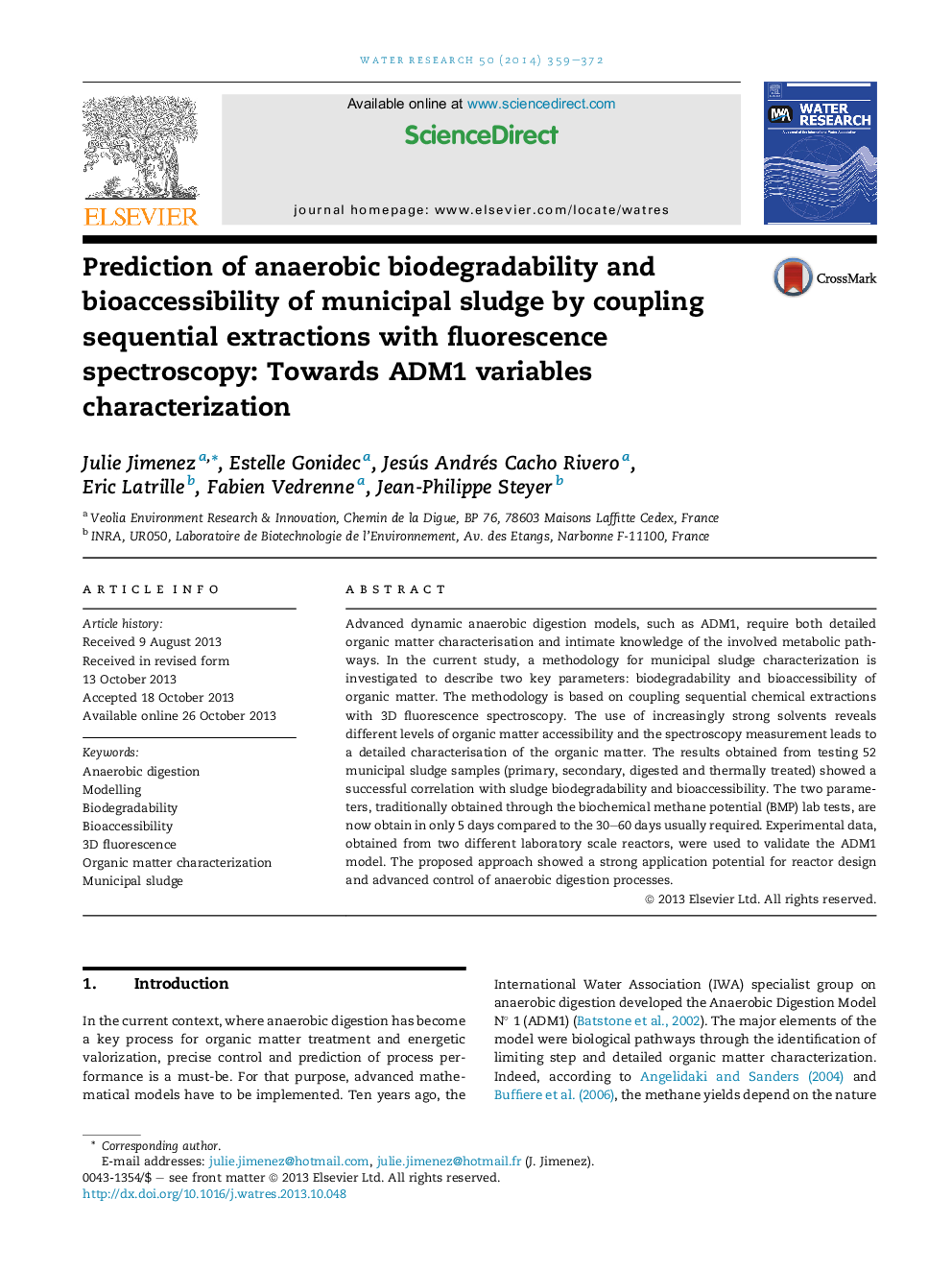| Article ID | Journal | Published Year | Pages | File Type |
|---|---|---|---|---|
| 6367009 | Water Research | 2014 | 14 Pages |
Abstract
Advanced dynamic anaerobic digestion models, such as ADM1, require both detailed organic matter characterisation and intimate knowledge of the involved metabolic pathways. In the current study, a methodology for municipal sludge characterization is investigated to describe two key parameters: biodegradability and bioaccessibility of organic matter. The methodology is based on coupling sequential chemical extractions with 3D fluorescence spectroscopy. The use of increasingly strong solvents reveals different levels of organic matter accessibility and the spectroscopy measurement leads to a detailed characterisation of the organic matter. The results obtained from testing 52 municipal sludge samples (primary, secondary, digested and thermally treated) showed a successful correlation with sludge biodegradability and bioaccessibility. The two parameters, traditionally obtained through the biochemical methane potential (BMP) lab tests, are now obtain in only 5 days compared to the 30-60 days usually required. Experimental data, obtained from two different laboratory scale reactors, were used to validate the ADM1 model. The proposed approach showed a strong application potential for reactor design and advanced control of anaerobic digestion processes.
Keywords
Related Topics
Physical Sciences and Engineering
Earth and Planetary Sciences
Earth-Surface Processes
Authors
Julie Jimenez, Estelle Gonidec, Jesús Andrés Cacho Rivero, Eric Latrille, Fabien Vedrenne, Jean-Philippe Steyer,
